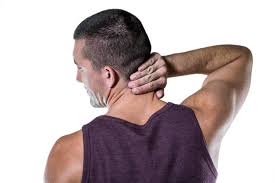
Endoscopic Retrograde Cholangiopancreatography, (ERCP) can be used
to diagnose and treat problems in the liver, gallbladder, bile ducts, and
pancreas. It combines X-ray and the use of an endoscope—a long, flexible,
lighted tube. A healthcare provider will guide the scope through your mouth
and throat, then down the esophagus, stomach, and the first part of the
small intestine. However, there are risks and complications for physicians
and patients to consider prior to having an ERCP.
Patient Symptoms
It is important that your physician considers your symptoms as well as blood
test and ultrasound, as well as any medical history of hypertension,
diabetes, and sleeping difficulties, before considering ERCP.
Patient Neck Size
Additionally, researchers suggest that neck size and throat conditions
should be considered when ordering an ERCP. It has been reported that a
large neck circumference (seen in athletes and former athletes, for
example) should be considered a risk factor when undergoing medical
procedures which require inserting tubes and scopes (the placement of a
flexible plastic tube into the trachea).
Obstructive Sleep Apnea
This is especially important for people who snore, have interrupted sleep,
hypertension of nocturnal dyspnea (attacks of severe shortness of breath
and coughing that generally occur at night). These symptoms may be an
indication of Obstructive Sleep Apnea or OSA.
It is important for you to discuss the following symptoms with your doctor prior
to undergoing an ERCP.
● OSA Diagnosis
● Large neck (>17 inches for men, >16 inches for women)
● Daytime sleepiness
● Snoring
● Gasping or choking events
● Witnessed apnea
1. American Academy of Sleep Medicine. Diagnostic and coding
manual. 2nd Edition. Westchester, IL: American Academy of Sleep
Medicine; 2005. International classification of sleep disorders.
2. Friedman M, Tanyeri H, La Rosa M, et al. Clinical predictors of
obstructive sleep apnea. Laryngoscope. 1999; 109:1901–7.
3. Kushida CA, Morgenthaler TI, Littner MR, et al. Practice parameters
for the treatment of snoring and Obstructive Sleep Apnea with oral
appliances: an update for 2005. Sleep. 2006; 29:240–3.
4. Johns MW. A new method for measuring daytime sleepiness: the
Epworth sleepiness scale. Sleep. 1991; 14: 540–5.
5. Kushida CA, Littner MR, Morgenthaler T, et al. Practice parameters
for the indications for polysomnography and related procedures: an
update for 2005. Sleep. 2005; 28:499–521.